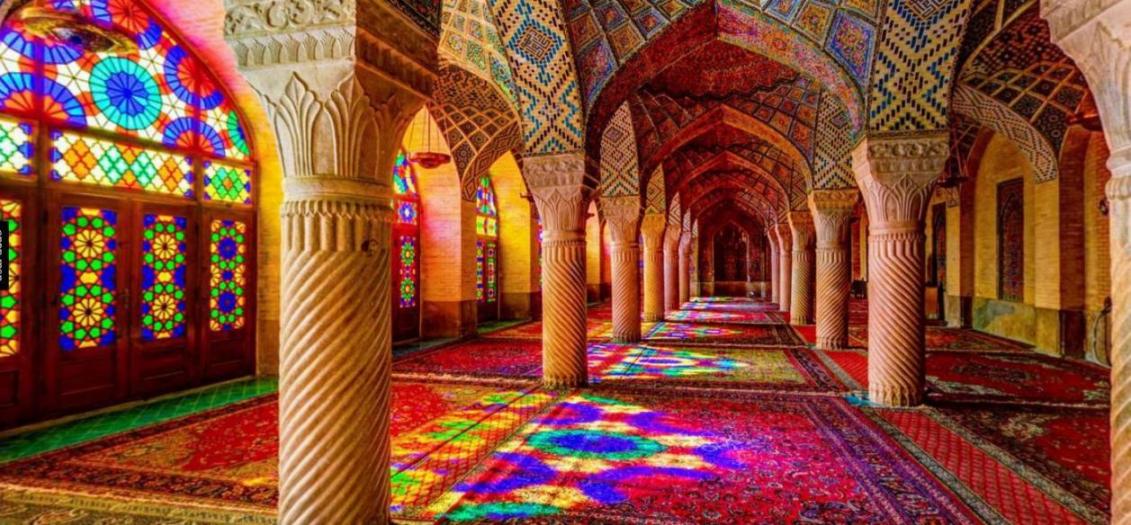Iranian architecture has always had a special place among the connoisseurs of the art, a statement confirmed by architecture aficionado Elaine Sciolino, who recently traveled to Iran.
In an article written for the reputable Travel+Leisure website, she calls 2016 “the year of Iran” and recounts her recent trip to the ancient cities of Isfahan and Shiraz. The following is an excerpt from her article.
The recent lifting of sanctions has made the country an irresistible destination for those who long to explore its historic treasures and its complex society.
On any tour for first time visitors, there are the “musts,” of course: the ancient ruins at Persepolis, the gardens in Shiraz, the palaces and mosques in Isfahan, the Crown Jewels in Tehran. But in just about every setting, artistry hides in plain sight: in carpets, calligraphy, pottery, miniatures, and my favorite: Iranian tiles, which are dizzyingly, deliriously magical.
Simply put, Iran has the most beautiful tilework in the world. Over the centuries, glazed bricks and tiles have been used to decorate palaces, mosques, monuments, mausoleums, official buildings, schools, and shops.
“For me and my family, there is no more important form of art,” Hossein Mosaddeghzadeh, a sixth-generation tilemaker whose shop is on Isfahan’s famed Naqsh-e Jahan Square, told me when I visited recently with a group of American tourists. “I mean, a mosque would not be a mosque without its tiles.”
Isfahan boasts tilework so dense and seductive that if you gaze at it too long, you feel slightly drugged. Swirling calligraphy and precise geometries are often unexpectedly paired with bright floral patterns.
The arches in the octagonal chamber in the Sheikh Lotfollah Mosque are outlined in a thick bright turquoise tile “rope” and framed with wide swaths of white calligraphy of Quranic verses on the deepest of blue. The glazed and unglazed ceiling tiles of the main dome change color with the time of day. If you’re lucky, you’ll see the rays of sunlight penetrating the center of the dome reveal themselves as a peacock’s tail. An Iranian friend once told me, “The first and only time I saw it, I felt blessed.”
In Shiraz, the 17th century Khan Theological School was cold and damp when I entered one rainy winter morning. A single light bulb hung from an exposed wire. The concrete walls were crumbling. A silent old man eating flatbread in a worn armchair kept guard. Then we looked up and saw inlaid mosaic tiles gracing the intarsia ceiling. The geometric shapes and the border—passages from the Quran cut into tile—seemed to dance.
Secrets Uncovered
At the nearby Nasir-ol-Molk Mosque—also known as the Pink Mosque—we saw tiles with lush roses in shades of pink and red. When we looked more closely, we found tile cameos depicting churches of Eastern Europe—a reflection of the influence of western architecture on Iranian artists and a sign of respect for Christianity.
The more you look, the more secrets are uncovered. A geometric pattern that looks like a maze may turn out to be a swastika, or “sun wheel,” symbolizing the rotation of the seasons. Sometimes the name of Ali, the son-in-law of the Prophet Muhammad (PBUH) and the first Iman of Shiite Muslims, is encrypted and rotated in geometric Kufic script.
I did not expect tile work at the Armenian Christian Church in Isfahan, but even the spire below the cross was dressed up in a geometric tile pattern of turquoise and cobalt blue. Inside, Mahmoud Reza Shayesteh, our guide, pointed out a large section of tile with a mysterious bird that looked like a cross between a woodpecker and a hummingbird.
“I thought it was the product of imagination,” he said. “But then I saw it with my own eyes in my father’s garden. I was thunderstruck.”
One evening in Isfahan, my daughter and I snuck away from the group. We happened on an antiques shop with a lovely old silver teapot in the window. It was much too expensive.
Then something else caught my eye: the hand-painted tiles. One bore the Ten Commandments in Hebrew; another a menorah (a seven-branched lampstand). The owner was Jewish. His tiles bore witness to history—the 2700-year-old history of the Jews in Iran.
“Come back,” he said as we were leaving.


